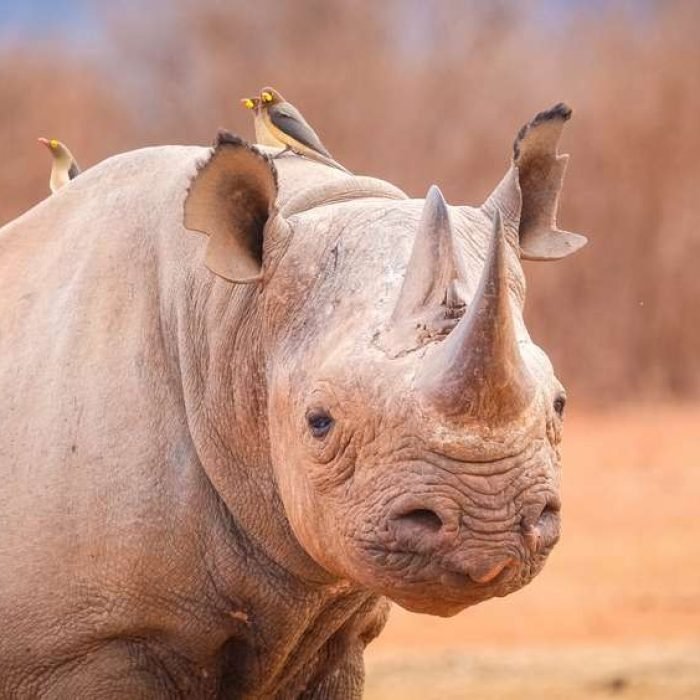Ground Pangolin
( Temminck's pangolin, Cape pangolin or steppe pangolin )
- Smutsia temminckii
- IUCN Status: Vulnerable
- Trend: decreasing

General Information
The Ground or Cape pangolin is one of two pangolins found in Zambia. It is larger and more widespread than the tree pangolin. As its name suggests, the ground pangolin is terrestrial meaning it spends most of its time on the ground. Their scales are so strong that not even lions can bite through them.
Description
Pangolins are almost completely covered in overlapping, protective scales, The scales are composed of keratin, the same material that forms human hair and fingernails these make up about 20% of their body weight and give pangolins an appearance similar to a pine-cone or artichoke. The underside of a pangolin is not covered with scales, but sparse fur, instead. When threatened, it usually rolls up into a ball, thus protecting its vulnerable belly. They have long, muscular tongues to reach and lap up ants and termites in cavities. Their tongues stretch so far, they are actually longer than their bodies.
Fun Facts
When threatened, ground pangolins curl into a tight ball, exposing their sharp, keratinous scales. This defensive posture shields their vulnerable areas like the stomach and face. They are the only mammals with scales. Their scales are made of keratin, the same protein that makes up human hair and nails. These scales, covering around 20% of their body weight, provide remarkable protection against predators. They are the most illegally trafficked wild mammal in the world. Pangolins are poached for their meat and scales, which are used in traditional Chinese medicine.
Ecology & Behaviour
Ground pangolins walk on their hind legs, occasionally using their forelegs and their tail for balance. Their limbs are adapted for digging. They have five toes each with the fore feet having three long, curved claws, which are designed to demolish termite nests and to dig burrows. Because of these claws, pangolins must balance on the outer edges of their fore feet and tuck in the claws to prevent damage. When attacked or alarmed it rolls itself into an impenetrable ball. The ground pangolin is wholly myrmecophagous, meaning that they only feed on ants and termites. In fact, they demonstrate prey selectivity, only eating specific ant and termite species rather than foraging on the most abundant species.
Ecology & Behaviour
Ground pangolins walk on their hind legs, occasionally using their forelegs and their tail for balance. Their limbs are adapted for digging. They have five toes each with the fore feet having three long, curved claws, which are designed to demolish termite nests and to dig burrows. Because of these claws, pangolins must balance on the outer edges of their fore feet and tuck in the claws to prevent damage. When attacked or alarmed it rolls itself into an impenetrable ball. The ground pangolin is wholly myrmecophagous, meaning that they only feed on ants and termites. In fact, they demonstrate prey selectivity, only eating specific ant and termite species rather than foraging on the most abundant species.
Ecology & Behaviour
Ground pangolins walk on their hind legs, occasionally using their forelegs and their tail for balance. Their limbs are adapted for digging. They have five toes each with the fore feet having three long, curved claws, which are designed to demolish termite nests and to dig burrows. Because of these claws, pangolins must balance on the outer edges of their fore feet and tuck in the claws to prevent damage. When attacked or alarmed it rolls itself into an impenetrable ball. The ground pangolin is wholly myrmecophagous, meaning that they only feed on ants and termites. In fact, they demonstrate prey selectivity, only eating specific ant and termite species rather than foraging on the most abundant species.
Conservation
The ground pangolin is listed as vulnerable by the International Union for the Conservation of Nature (IUCN Red List). Ground pangolins are remarkable animals with unique adaptations and an important ecological role. Their resilience and ability to thrive in challenging environments make them truly fascinating creatures.
Distribution & Habitat
In Zambia the ground pangolin is very widespread and can be found in most parts of the country. The ground pangolin species are native to 15 African countries dispersed throughout southern, central, and east Africa.
Interaction with Humans
The two main threats encountered by ground pangolin populations are habitat loss and illegal trafficking
References
Share:
- Kingdom: Animalia
- Phylum: Chordata
- Class: Mammalia
- Order: Pholidota
- Family: Manidae
- Genus: Smutsia
- Length: 30 to 90 cm
- Weight: 5 to 27 kg
- Tail Length: 26 to 70 cm
- Lifespan: up to 20 yrs in captivity














